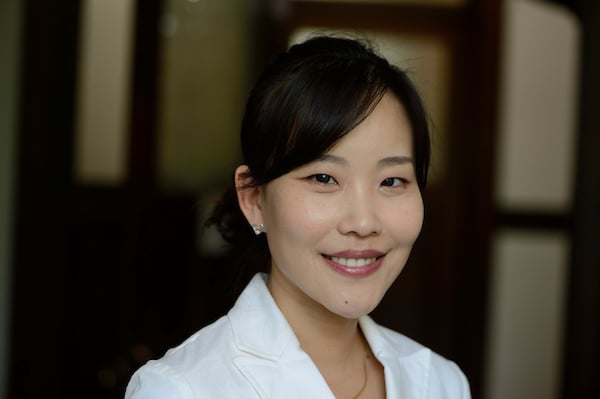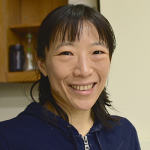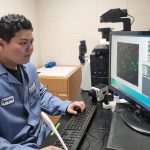New method makes analysis of cells quicker, easier

Researchers at Johns Hopkins Whiting School of Engineering have developed a new method to align cells uniformly at one focal plane regardless of their size or distribution, which could improve the accuracy and efficiency of various medical tests.
Their study, published last month in Physics of Fluids, describes the use of a microfluidic device to purify specific cells with great precision based on their size.
“This development allows for a simple way to separate and collect cells in a liquid stream without treating the cells with chemicals, which used to be the conventional process. Once collected, the cells can be characterized to determine their origin, growth stage, and overall health,” says study co-author Claire Hur, Clare Boothe Luce Assistant Professor in the Department of Mechanical Engineering and associate researcher for the Institute for NanoBioTechnology at Johns Hopkins University. “This could lead to more effective manipulation of cells and particles with applications in medicine and engineering.”
Hur said the researchers found the ideal flow conditions in which live cells can be arranged in a particular order based on their physical properties—how soft or big they are—when those cell mixtures are flown through straight microfluidic channels.
There is a lot of interest from companies and researchers in the use of non-Newtonian liquids (liquids whose viscosity changes in response to stress), including viscoelastic polymeric buffers, according to the author of the paper and graduate student Takayuki Suzuki, because of several unique benefits non-Newtonian liquids provide.
“Our results predict that non-Newtonian liquids are better at separating cells with similar size which may be indistinguishable in Newtonian liquid,” Suzuki said. “Overall, our work serves as a valuable resource for scientists and engineers aiming to develop their own microfluidic device for a wide range of applications.”
This development could make flow cytometry, or the rapid analysis of single cells while suspended in a buffered salt-based solution, faster and cheaper, while also making it more affordable to purify cells in adherence to current Federal Drug Administration regulations, Hur said.
Hur says that this work is the direct result of the 2020 Discovery Award she won with Donald Zack, professor of ophthalmology and co-director of the Johns Hopkins Center for Stem Cells and Ocular Regenerative Medicine for their published results on the purification of retinal cells.





